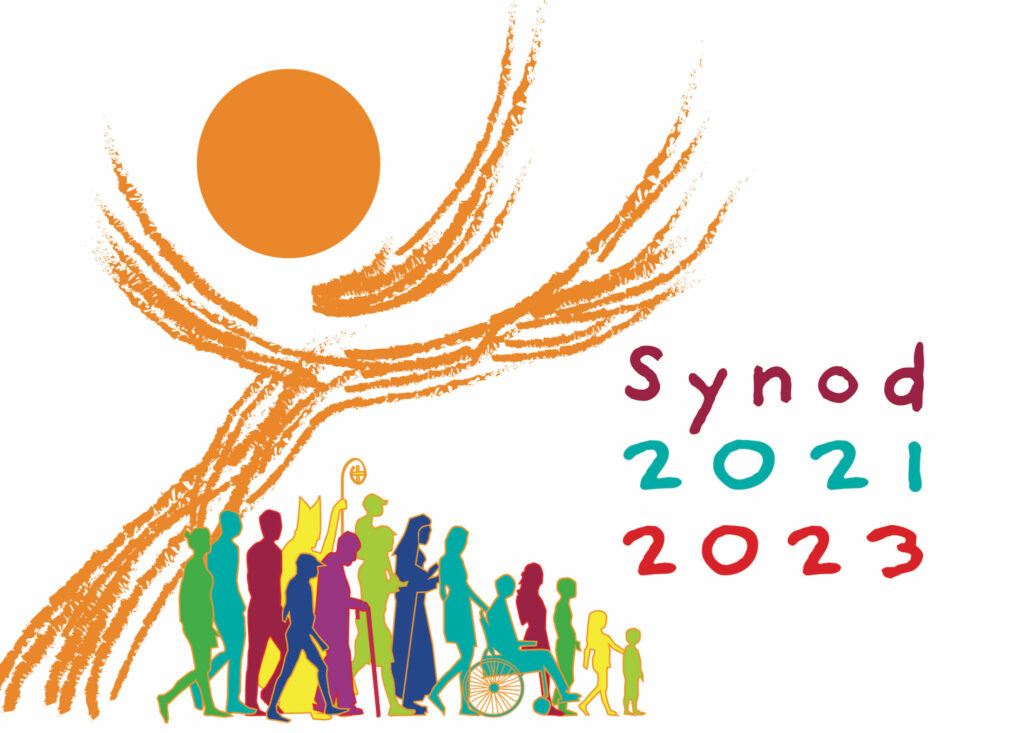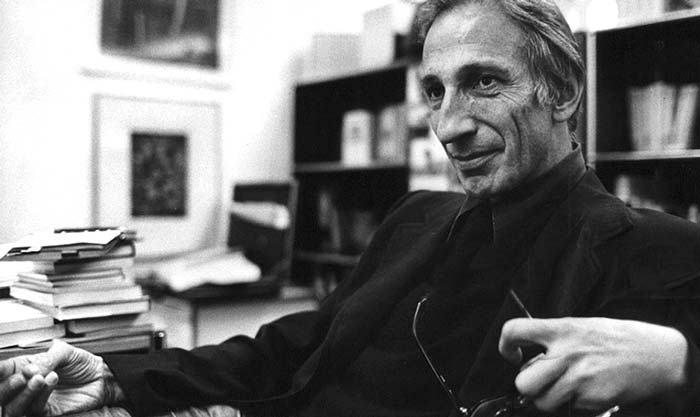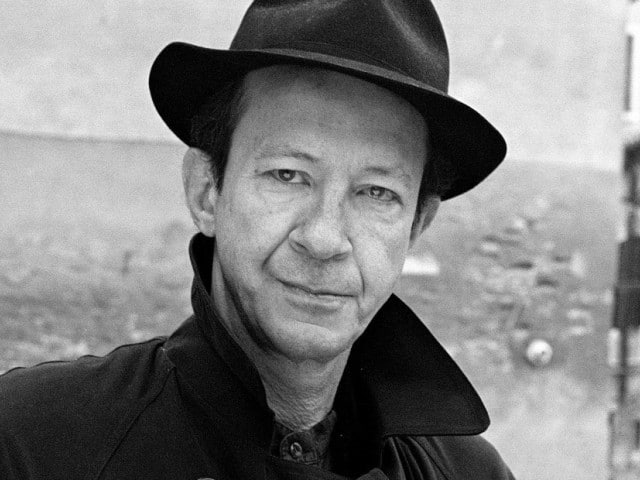SINCE THE CHURCH in its aspect as a juridical institution seems so keen to be at one with the world rather than its sign of contradiction, its leaders managers, lay and clerical, have almost unquestioningly adopted a secular, often corporate vocabulary that is often so vague that no one can define it, and those who can won’t because that would remove the ambiguity useful to them.
Thus, we might ask, in what way is “accompaniment” new, different from what the clergy have been doing for two millennia in supporting the faithful in their trials and joys: baptising the newborn, initiating them into the sacramental life of the Church, marrying couples, visiting and anointing the sick and dying, burying the dead, absolving sins and counselling the troubled, correcting the wayward and encouraging the faint of heart, confronting untruth and teaching what Christ commanded? Without daring to define it, the proponents of “accompaniment” seem to be positing something that is little more than indulgence, even tacit approval, of sin. The traditional and otherwise valid word “pastoral” is applied to camouflage this indulgence.
And again, what is “synodality”? How is it different to, and better than, the collegiality advocated by the Second Vatican Council? Synods are traditionally meetings of bishops. The Synod on Synodality—a meeting on how to have meetings—is another creature entirely, with all categories of people in the Church, and outside it, invited so that the Church can “listen” to them. It is sad to say, but listening has become an Orwellian mechanism for changing groups and their attitudes without them realising. No longer does the Church seem to want to teach, one of her fundamental missions from Christ. The patronising infantilism of the Synod’s official logo—quite aside from its ugliness—rather gives the game away to those with eyes to see.

What is this ”synodal church” we are now supposed to be building? To say it is a trojan horse for democratisation is to understate things entirely. It is more a trojan horse for secularization. We are to be in the world not to save it—we are all saved, that is the implicit dogma of the magisterial Church today—but to be one with it. The Church must decrease, the world must increase. Timeless and fundamental Christian values must yield to whatever passing fad or modish concept excites the Twitterati. We no longer must please God but every pressure group that can shout its cause loudly enough on Twitter for the media to think it is important. The Truth must yield to the legion of “my truths.”
As many a convert from the Anglican communion will tell you, synodal government has been instrumental in the rapidly advancing decline of that family of separated brethren. Why, then, does the juridical Church seek to hop on a bandwagon that is hurtling so inexorably towards the cliff’s edge? Where is synodality in scripture? How can it justify supplanting the apostolic structure conferred on the Church by Christ? Where is its basis in Vatican II?
That said, let us be honest. Given recent liturgical legislation and the fad of synodality, inter alia, we can safely say that Vatican II is dead beyond being merely a totem to invoke when convenient. We do not live in a conciliar Church, but a post- and extra-conciliar Church. It is exactly congruent with postmodernism and its values. Collegiality, leaving aside its questionable doctrinal foundations, has not developed as the Council fathers clearly intended it. Instead of bishops being left to run their dioceses and gather, as necessary, to assist the pope in shepherding the Church, what is now labelled as collegiality has replaced a college with a conference which restricts a bishop’s leadership of his diocese more than he would have experienced before the Council. Bishops now must be “team players,” who fall into line with the majority vote of the bishops’ conference, much like a cabinet of government ministers. Instead of balancing papal power, they have enabled a strengthening of papal centralism in matters beyond doctrine. Bishops have largely ceased to be shepherds and have been forced to become CEOs, or worse, regional managers for head office.
Less than 100 years ago a diocese was understood as a geographical unit governed by a bishop as a successor to the apostles, who was the hinge of unity with the universal Church, and the effective shepherd of the local Church. Now we speak of a diocese, almost unconsciously, as its administrative bureaucracy. Once the diocesan office was a small affair staffed by a few clergy who managed pastoral and temporal affairs under the bishop, and were paid a modest clerical stipend in return for a working week that far exceeded 35 hours. Now the diocesan office is often a large building, staffed by largely lay ecclesiocrats on salaries at parity with the commercial world. The diocesan bureaucracy has become a self-perpetuating end in itself. Increasing amounts of money from what faithful remain go towards a body that seeks to preserve its own life through endless initiatives that are costly in terms not only of money but also of time and energy. None of them bear fruit that lasts, if any fruit at all. Proclamation of the gospel is replaced by corporate-and-woke-jargon-filled initiatives executed by people who make their living precisely from advocating and perpetuating as many of these initiatives as possible, initiatives informed not by scripture or tradition but by whatever is the corporate orthodoxy of the week.
Sinking in the midst of it all are the clergy. As their number declines, their burden increases, not least due to the demands made on them by such diocesan initiatives as described above. They must suffer the ignominy that naturally falls upon them from their confreres who have sexually abused children on a scale that is not new, just newly recognised. For most of the clergy that is a cross we must carry as a necessary result of our solidarity with the presbyterate and the Church on earth as a whole. What hurts far more, and causes far more damage, are the endless accusations of “clericalism” that are more often than not based on caricatures of priests, not real priests. Of course, there are clergy who take themselves too seriously, and serve their own interests before God’s. There is a similar proportion of laity for whom the same could be said. Sin is the human condition, and the presbyterate (and episcopate) is no less human than the rest of the Church. And it is a Church of sinners, a hospital for the sick not a palace for the perfect. Setting up a false dichotomy between clergy and laity, demonizing the former and aggrandizing the latter, is inevitably destructive for the whole Church.
Priests today are damned whatever they do. I strongly encourage them, as I try to encourage myself, to serve Christ first and above all, as we discover him through Scripture and the Tradition and Life of the Church throughout history up until now; to test the spirits of our day to see which are truly from God; to aim not for a larger Church first of all, but for a more faithful, more truly committed people of God who want to conform their lives to the teaching of Christ, not the teaching of Christ to their lives. To seek first the Kingdom and its righteousness, and to be content to trust that God will provide whatever they truly need.
Apart from the prayerful support of their people, a smile and a grateful word occasionally, a little encouragement even, what priests urgently need in their lives today is no “synodality,” less diocese, and much more of the bishop. If priests felt the regular and concrete concern of their bishops, felt that their bishops were truly pastors to them who are their cooperators and agents in the apostolic ministry, the joy of the clergy would double immediately. If bishops could spend less time at meetings, and more time with their clergy, what a change there could be.
Are all bishops deficient? Of course not. Do they not struggle too with the demands of their ministry, as they try—vainly—to be all things to all? Of course. Bishops and priests are integral, and essential, to the life, growth and fruitfulness of the Body of Christ on earth. They should not be afraid to say so, either.
One is wary of identifying prophets today. For a start, there are too many self-appointed or mis-identified prophets already. However, I find prophetic witness in the writings of two thinkers I have only recently discovered, and who do not entirely fit the assumed prophetic mould. The more recent witness comes from the Italian philosopher Giorgio Agamben, especially in his retrieval of the insights of Tyconius and Augustine into the Church on earth as being both the Body of Christ and the Body of Antichrist. The witness of a generation ago, indeed a little more than that perhaps, is of the unconventional and rather radical priest and thinker, Ivan Ilich, especially in his insights into death (profoundly orthodox) and his advocacy of what we might inadequately summarize as deinstitutionalization. This is not to be confused with anti-institutionalism. Rather it seeks to remove the crusts and constraints that over-developed institutions lay on the principles for which they exist to serve. Or to paraphrase Marshall McLuhan, it seeks to be a corrective when the medium becomes the message, when the means becomes the end.


Make of all that what you will.
Excellent article. I have forwarded it to a friend of mine who was grappling with a parish ,or maybe diocesan questionnaire , about forming a discussion group re synodality. Of course. A discussion group. I’m sure a lot of well meaning nonsense will be talked which will in the end signify nothing. But the parish priest will feel that he has complied with his bishops requests. It is all so tiresome and distracting.
Dialogue…discussion…sharing. How about some teaching, I often cry internally! My blessings on your friend. May the process produce patient endurance, if nothing else! Pax.
The real problem in the Church today is not clericalism, but ” layism” – the prevailing belief that clergy=bad, laity=good. Frequently, when the laity rule, it is a tyranny of ignorance, with dissenters harshly shunned if they dare to disagree with “liberal” ideas; similarly, the priest, who is isolated and condemned. This synod is, quite simply, a rubber stamping exercise – the Church will follow the German synodal path and the views of the lay power elites will be used as the justification.
As with most reactions, the pendulum here has moved as far, if not further, in the opposite direction. The democratic spirit of the 60s onwards, combined with an increasingly secularist body Catholic, has often led to what you rightly term a tyranny of ignorance. Beneath it all is a crisis of faith in the supernatural. The Church is reduced in the minds of too many laity, and clergy, to a purely human, social institution. When that is the mindset, the decline into purely social/secular standards of action and measurement are inevitable.
Pax.
Do you see a way back from this Fr Hugh or is it all too far gone? (Not denying the power of God of course) but it is tempting to close oneself off and perhaps keep one’s spiritual life firmly in the past of tradition and ignore what comes from Rome and the bishops. We have lost so much of beauty and Catholic praxis. We know that in many Catholic schools catechesis is less than adequate and there is very little at parish level either. As you say, the Church should not be ‘accompanying’ the people but leading and teaching exactly as Our Lord commanded.
There is always hope. The Church endures, and will endure on earth until the Last Trumpet. What form and size or will take at any one time is another matter entirely. I think Professor Joseph Ratzinger was prophetic in 1969: that the Church would be secularised, requiring that it shrink to a faithful remnant, from which rebirth could come. Christ promised that the Church would always survive, not that it would always prosper.
Deinstutionalizing the Church is resacralisating it, when seen from another angle. And that begins with the sanctification of its members, beginning with you and me. It’s a big call!
Pax.
Thank you so much for this article.
I have plenty of doubts on the “goodness” of the Synod and my guess is that it will only strenghten Church’s bureaucracy through a very perverse method, the consent of the laity. In this sense, it may well be that we end up with even more clericalism, this time in disguise.
Maybe I am too pessimistic, but I know all too well the functioning of International Organisations to ignore the similarities between “their way” and all we know about the Synod so far. Just the “meeting on how to have meetings” idea says it all.
What worries me the most is the enthusiasm I see in so many good faith friends of mine about the Synod. In a way, this enthusiasm comes from a total trust in pretty much everything that comes from the Vatican, from the Synod to the China Agreement. It’s almost as if their departure point is something like “it comes from the Vatican/Pope/Church, so all the proposals must be good and I lack the legitimacy to question them”. This comes from something that was mentioned in one of previous comments: ignorance and a very infantilzed laity. Still, I have joined one of the discussion groups in my community to see how it goes.
I was very curious about Ivan Ilich’s idea of “deinstitutionalization”, it seems quite timely not only for the Church but also for other institutions. Thank you once again for the post and for the blog.
It was a similar, though even more pronounced, habitual deference to Rome that allowed the liturgical reforms from 1970 to be accepted, even though they were not wanted by the majority of laity or bishops. Obedience was ingrained. Roma locuta est; causa finita est – what Rome decrees ends all debate. Irony abounds! Pax.